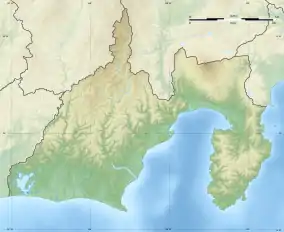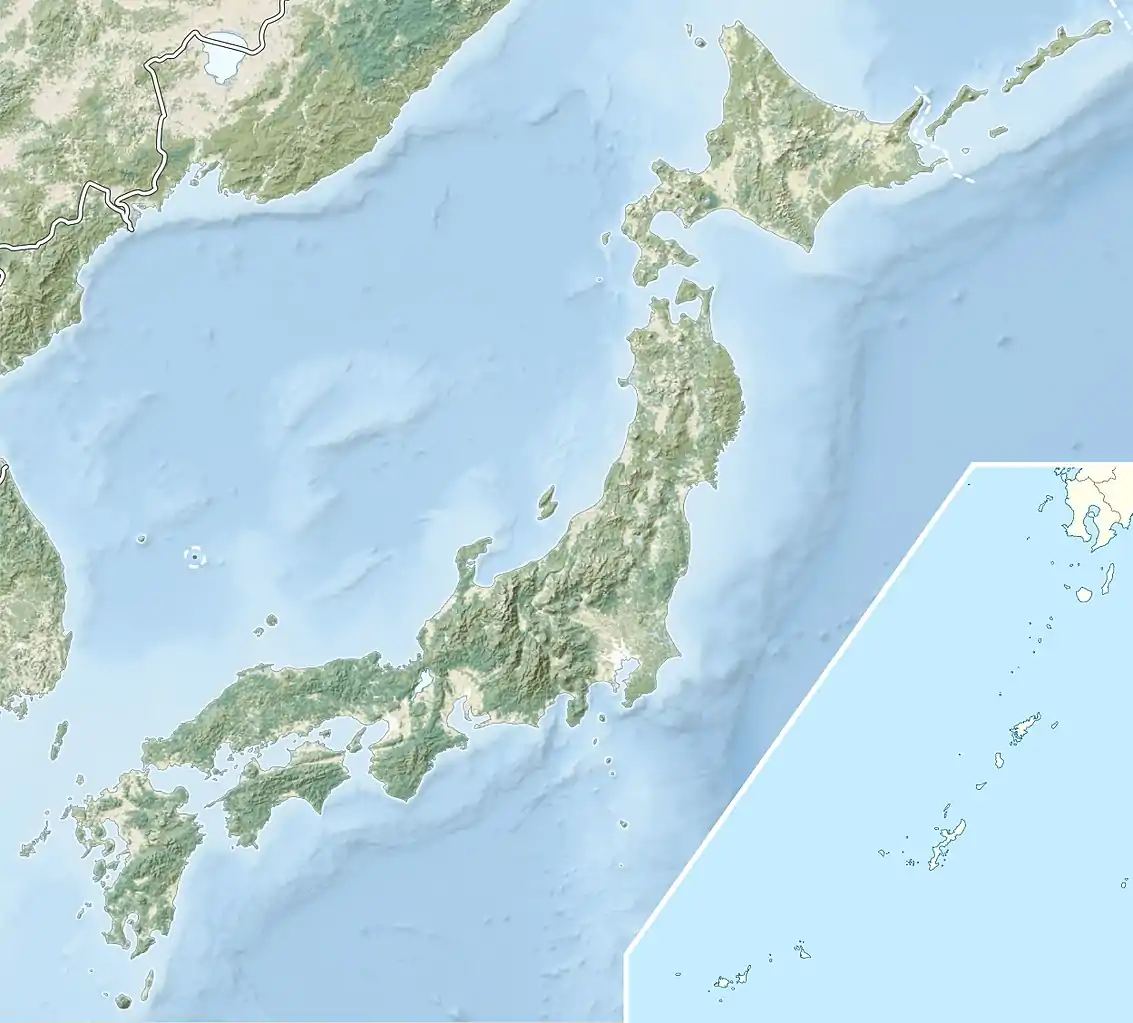Teradani Chōshizuka Kofun
Teradani Chōzuka Kofun (寺谷銚子塚古墳) is a keyhole-shaped kofun burial mound located in what is now part of the city of Iwata, Shizuoka in the Tōkai region of Japan. The site was designated a National Historic Site of Japan in 1956.[1]
寺谷銚子塚古墳 | |
 Teradani Chōzuka Kofun  Teradani Chōshizuka Kofun (Japan) | |
| Location | Iwata, Shizuoka, Japan |
|---|---|
| Region | Tōkai region |
| Coordinates | 34°46′47″N 137°50′21″E |
| Type | kofun |
| History | |
| Founded | 4th century AD |
| Periods | Kofun |
| Site notes | |
| Ownership | National Historic Site |
| Public access | Yes |
Overview
The Teradani Chōzuka Kofun is located on the east bank of the Tenryū River. It is orientated south-south west and has a total length of 108 meters, making it the third largest found in Shizuoka Prefecture. The rectangular portion is 52 meters long with a height of 4.5 meters, and the domed portion has a diameter of 58 meters and height of 5.8 meters. Inside was a vermilion-painted burial chamber with length of three meters. The tumulus has the remnants of a moat surrounding it, and the tumulus was once covered in fukiishi. The tumulus was excavated in 1880 and 1898, and was found to contain an ancient triangular-edged Shinju-kyo Bronze mirror with a design of mythical animals, pottery and bronze artifacts, which dated the tomb to the middle to end of the 4th century.
The surrounding area contains many other ancient kofun, which are not covered by the National Historic Site protection, with the exception of the Kochōzuka Kofun, a smaller keyhole-shaped tomb immediately adjacent to the Teradani Chōzuka Kofun. This tomb has a length of 54 meters, orientated east, and with a square-rectangular configuration.
References
- "銚子塚古墳附小銚子塚古墳" [Jōnozuka kofun] (in Japanese). Agency for Cultural Affairs.
External links
- Iwata city home page (in Japanese)